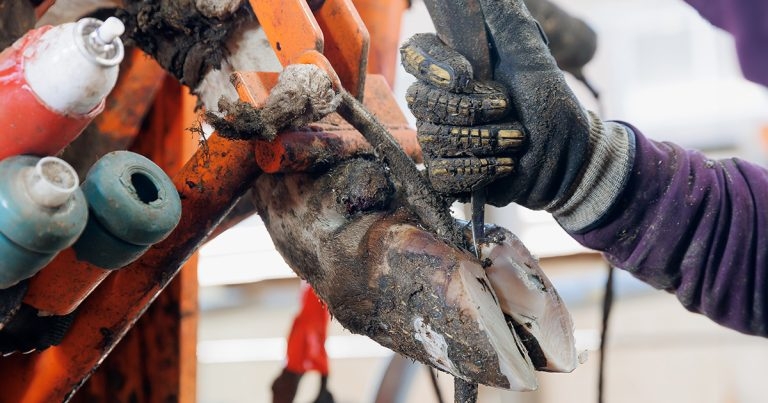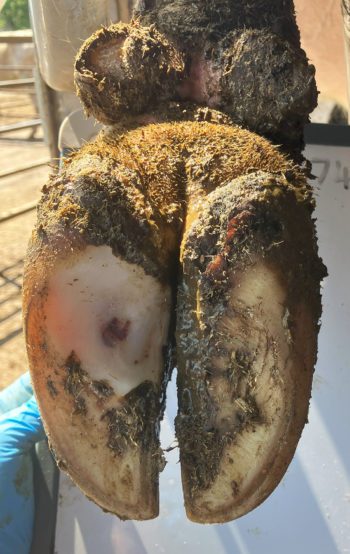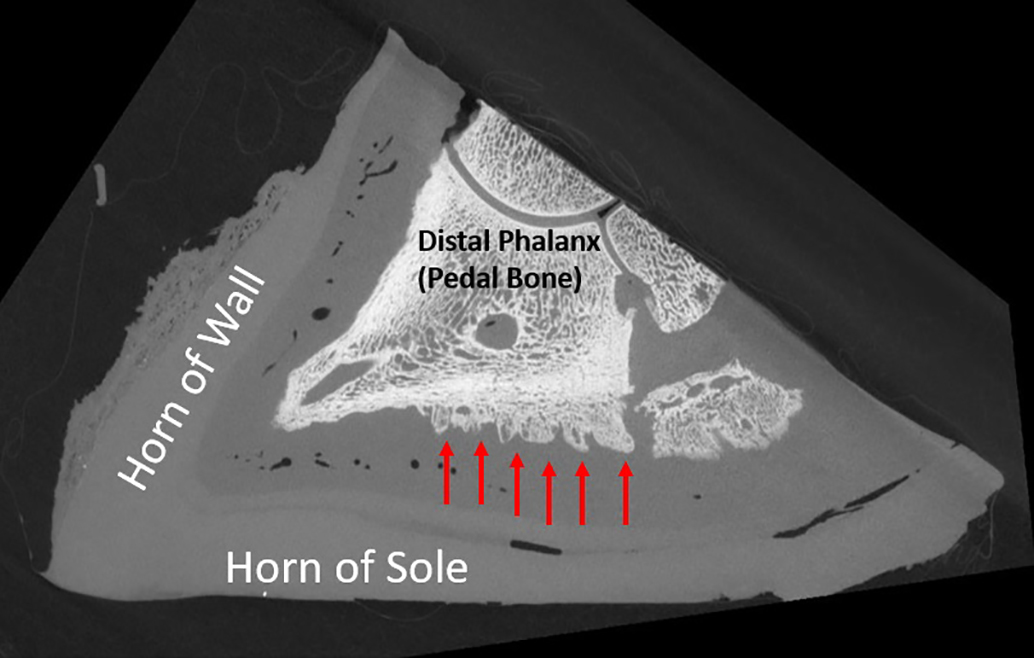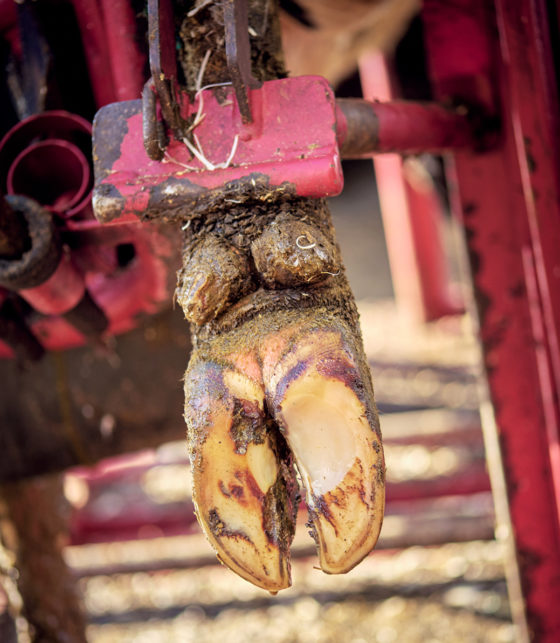17 Sept 2024
Preventive hoof trimming is fairly standard in the UK’s dairy herds today, but research into how and when it should be done – while expanding all the time – is not as plentiful as it could be. Previewing her session at congress, when results of a new study she has been involved in will be presented, the author runs the rule over previous and current thinking.

Image © Parilov / Adobe Stock
Preventive hoof trimming in dairy cattle is a common practice across the UK, with 82% of herds implementing it to some degree as part of lameness management (Pedersen et al, 2022). However, despite this, relatively low numbers of robust studies have assessed when and how we should hoof trim.
Since the original Dutch Five Step Method was introduced by Toussaint Raven nearly 40 years ago, with the grazing Friesian cow in mind, we have seen a shift towards the larger Holstein breed – and cows spending more time housed or exposed to concrete.
This has required a re-look at the method for today’s modern cow, with adaptations to both toe length (Archer et al, 2015) and the size of the model (Stoddard, 2018; Sadiq et al, 2021) being proposed and studied.
The expanding evidence base has helped to further inform best practice trimming protocols, which is especially important given the risk associated with poor technique or overtrimming. Where this occurs, a danger exists that what should be a preventive approach can actually lead to an increased risk of lameness.
Furthermore, the lack of legislative oversight of professional hoof trimming, and absence of any requirement for formal qualification (or, indeed, any training) results in a wide range of trimming techniques being implemented with varying results – even where standardisation measures are in place.
Increasing the evidence available to help formalise standards – specifically with regards to trimming technique – will be of benefit in contributing to the reduction of lameness across the dairy industry.
During the past decade, our understanding of the aetiopathogenesis of claw horn lesions (that is, sole bruising, sole ulcer and white line disease; Figure 1) – and the factors that lead to chronically lame cows – has rapidly developed.

Once a cow develops a claw horn lesion, a vicious cycle of further inflammation and pathological change begins. This not only involves the formation of bone spurs on the underside of the pedal bone (Newsome et al, 2016; Figure 2) but a reduction in the volume of the fat pad as well (Wilson et al, 2021).
Each time the cow experiences lameness these changes are compounded, which explains why a previous case of lameness is a significant contributor to future risk (Groenvelt et al, 2014; Randall et al, 2018). It also helps to understand potential rationale as to why preventive trimming strategies are less effective at preventing future lameness in cows that have previously been lame (Daros et al, 2019).
However, alongside improved knowledge of the development and progression of claw horn lesions, we are also much more aware of the optimal protocols for the detection and treatment of lame cows so that we can both speed up recovery and reduce the risk of a cow becoming chronically lame (Groenvelt et al, 2014; Thomas et al, 2015).
While focusing on improving early detection and prompt effective treatment is a key component of lameness management (Figure 1), a need exists to further explore the role of hoof trimming as part of prevention in cattle that have never been lame, to inform best practice protocols.
As a result of our improved knowledge of the role of historic lameness, the focus has logically shifted towards a greater emphasis on pre-calving and first lactation heifers, and how we can reduce the risk of lameness in the first instance.
Although the suggested target lameness prevalence in first lactation is below 6% (Mahendran et al, 2017), numerous studies (Capion, 2009; Randall et al, 2016; Mahendran et al, 2017) and field experience indicate it is much higher.
Given the increased attention on heifers and the need to target them with preventive strategies, it is surprising that only a reported 5.9% of UK dairy farmers routinely preventively hoof trim heifers in the pre-calving period (Pedersen et al, 2022). This could be due to the logistical challenges of handling heifers pre-calving, but also due to previous studies that have questioned whether it is beneficial (Maxwell et al, 2015; Mahendran et al, 2017).

In the same study by Pedersen et al (2022), when farmers were asked what they would most like to know in relation to preventive hoof trimming, the single most common question was “should I be trimming heifers pre-calving?” However, before determining when to trim, it’s also important to consider how to trim – that is, trim technique. This was also a specific area of focus that farmers were interested to know more about. Conflicting views, differing interpretations of the evidence base and deviations from best practice trimming protocols all contribute to confused messaging, which can be difficult to interpret for the producer.
These considerations reinforce the need for further research into the outcome of trimming pre-calving heifers with the aim of providing more conclusive answers as to when and how we should be doing it – or, indeed, whether we should be trimming them at all.
The rationale behind the larger model is that it provides greater “rest” at the sole ulcer site as it is both deeper and wider (Figure 3). As a result, it takes longer for horn regrowth to completely fill the model site and the sole ulcer site to bear weight again.

Previous research in this area has focused on housed adult dairy cows with intervention at the pre-calving (“dry off”) inspection (Stoddard, 2018; Sadiq et al, 2021).
Stoddard (2018) compared a traditional model against a deeper, wider model and reported a reduction in white line disease and sole ulcers in first lactation cows. However, this effect was not found in older cows. Sadiq et al (2021) also included a negative control group with cows that weren’t trimmed, just observed. This study reported a reduction in the overall prevalence of claw horn lesions in the wider model group in comparison to the traditional model and the control (untrimmed) group.
Therefore, based on the current evidence base, the effect of incorporating a deeper, wider model creates benefits for foot health. However, its effects in pre-calving heifers is currently unknown. In addition, questions remain as to whether it is beneficial to hoof trim pre-calving heifers at all.
The only randomised controlled trial to be undertaken on this cohort was by Mahendran et al (2017), who reported a negative effect of intervention at this stage. Although this is potentially explained by the trimming taking place too close to calving (three weeks) and in a high-wear environment, it still raises questions to exactly when and if we should be intervening.
To help address some of these questions, a randomised controlled trial was developed to expand the existing evidence base surrounding trimming heifers pre-calving and identify whether the reported benefits of the deeper, wider model in first lactation cows also applied to pre-calving heifers.
Nearly 1,000 pre-calving heifers from six farms were recruited approximately 50 to 70 days prior to their predicted calving date and randomly allocated to one of three groups:
The size of the model on the hind lateral and front medial claws was standardised for each intervention group and the depth of the model at the sole ulcer site was also measured. Enrolled heifers were then mobility scored fortnightly until 70 to 90 days in milk, when they were reinspected for claw horn lesions.
Preliminary results of the study will be presented at BCVA Congress in the Friday afternoon lameness stream in the Holstein Room.
The results will shed further light on how we should advise clients with regard to trimming protocols in pre-calving heifers.
Ensuring that heifers enter the dairy herd with optimal foot health is a key component in the drive towards reducing overall lameness prevalence and negating the detrimental impacts of lameness on welfare, productivity and sustainability.
If a benefit to trimming heifers pre-calving exists then this creates a large opportunity due to the low number of producers already implementing this as part of their lameness management.
This project was fully funded by the Agriculture and Horticulture Development Board Dairy as part of the University of Nottingham Research Partnership.